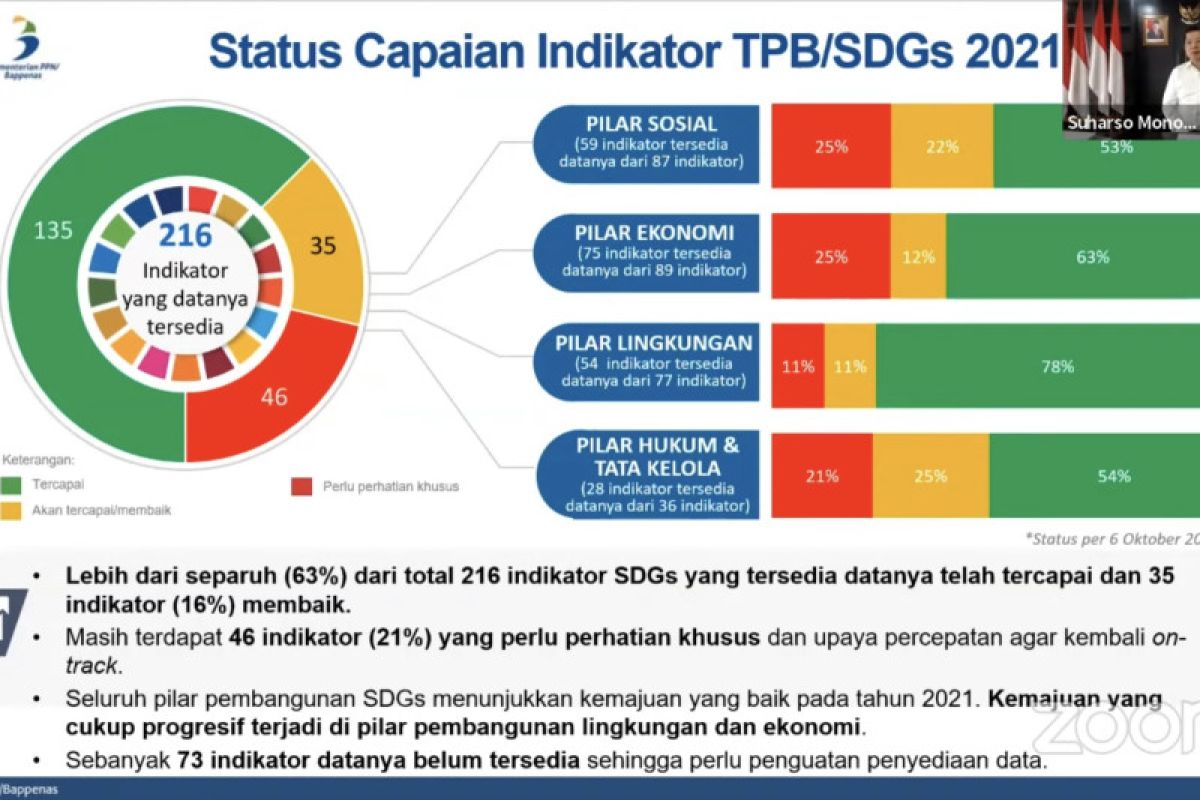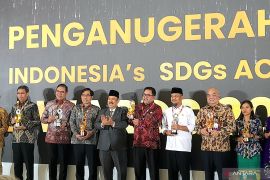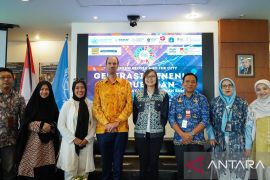It shows that in the midst of (improving) economic activities, the energy use efficiency can be maintained.Jakarta (ANTARA) - National Development Planning (PPN) Minister Suharso Monoarfa highlighted that 135 indicators, or 63 percent of the total 216 indicators of the 2021-2024 national program for Sustainable Development Goals (SDGs) had been achieved.
"As of December 31, 2021, reports on the SDGs indicators (achievement) showed that more than half, or 63 percent, of the total 216 SDGs indicators -- whose (assessment) data were available -- had been realized according to the determined targets," he stated here on Tuesday.
In the Dissemination of information on Presidential Regulation Number 111 of 2022 regarding the implementation of the realization of SDGs, Monoarfa remarked that the 216 SDGs indicators comprised 59 social pillar indicators, 75 economic pillar indicators, 54 environmental pillar indicators, as well as 28 law and governance pillar indicators.
Meanwhile, the 135 SDGs indicators whose targets were achieved comprised 31 social pillar indicators, 47 economic pillar indicators, 42 environmental pillar indicators, as well as 15 legal and governance pillar indicators.
The 31 social pillar indicators included the availability of essential medicines in health facilities that increased, from 92.12 percent in 2020 to 92.33 percent in 2021.
Related news: SDGs become instrument to achieve Indonesia's 2045 vision: Minister
The indicators also comprised the participation coverage of the state-run Health Social Security Insurance (BPJS Kesehatan) program.
The coverage of the program increased significantly by 53.98 percent for formal workers and by 8.14 percent for informal workers in 2021.
Meanwhile, one of the economic pillar indicators that had been achieved was the decrease of the value of primary energy intensity that measures the energy used to produce one unit of gross domestic product (GDP).
The values of primary energy intensity were targeted to reach 139.5 in 2020 and 138 in 2021.
However, the realization of the target was 133.7 and 133.9, respectively, thereby translating to the fact that the actual energy consumption rates were more efficient that the targeted ones.
"It shows that in the midst of (improving) economic activities, the energy use efficiency can be maintained," the minister noted.
Related news: Village funds can help build disaster resilient communities: ministry
Furthermore, the proportion of the government's total revenue to the GDP, which was also one of the achieved economic pillar indicators, also exceeded the target.
Regarding the achieved environmental pillar indicators, one of them was the increasing water conservation areas, from the initial 24.1 million hectares to 28.4 million hectares in 2021.
The other achieved environmental pillar indicator was the reduction of the potential of greenhouse gas emissions, whose realization also exceeded the determined target in 2021.
Meanwhile, the achieved law and governance pillar indicators included the improvement of the value of anti-corruption behaviour survey (SPAK), from 3.84 in 2020 to 3.88 in 2021.
"The (targeted) bureaucratic reform index (as one of the law and governance pillar indicators) has also been achieved at the ministry/institutional, provincial, district, and city levels," Monoarfa added.
Related news: "Regsosek" expected to integrate central, local government programs
Related news: Developing countries' resilience important amid global crisis
Translator: Astrid Habibah, Uyu Liman
Editor: Fardah Assegaf
Copyright © ANTARA 2022












